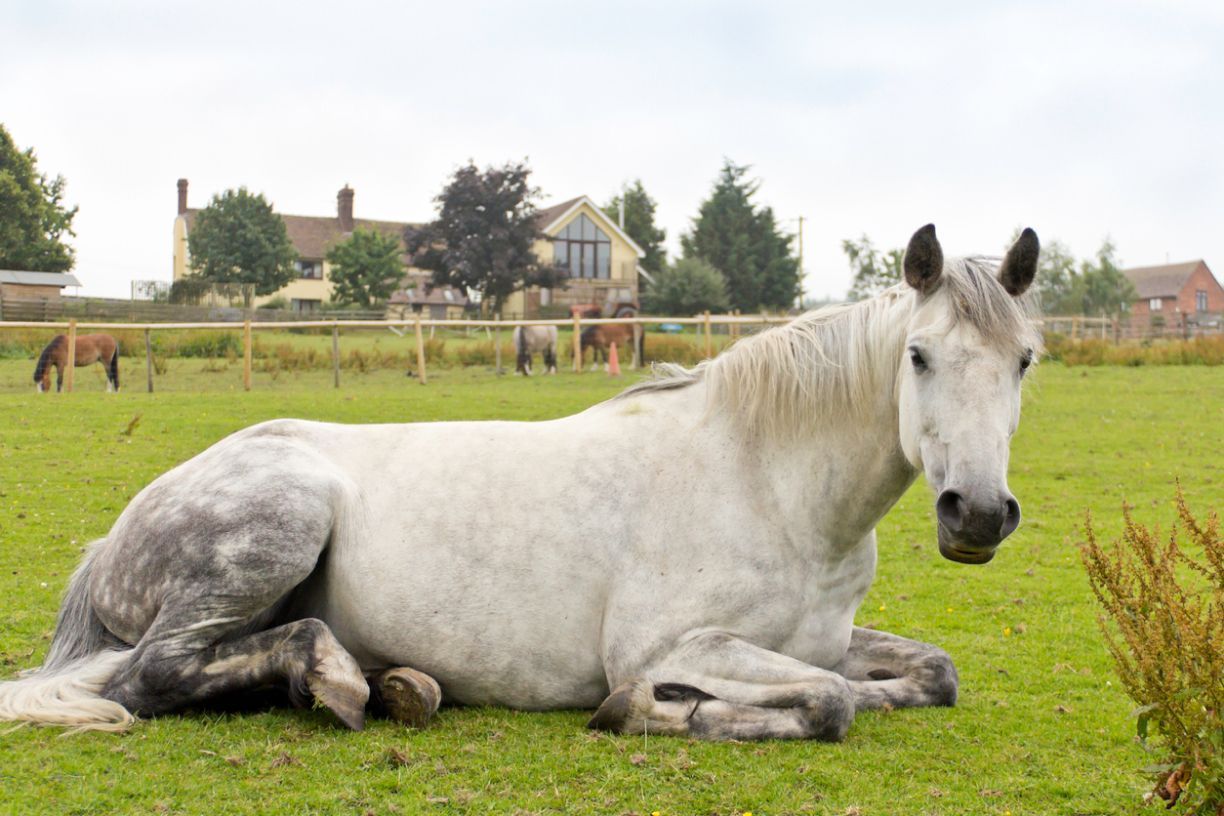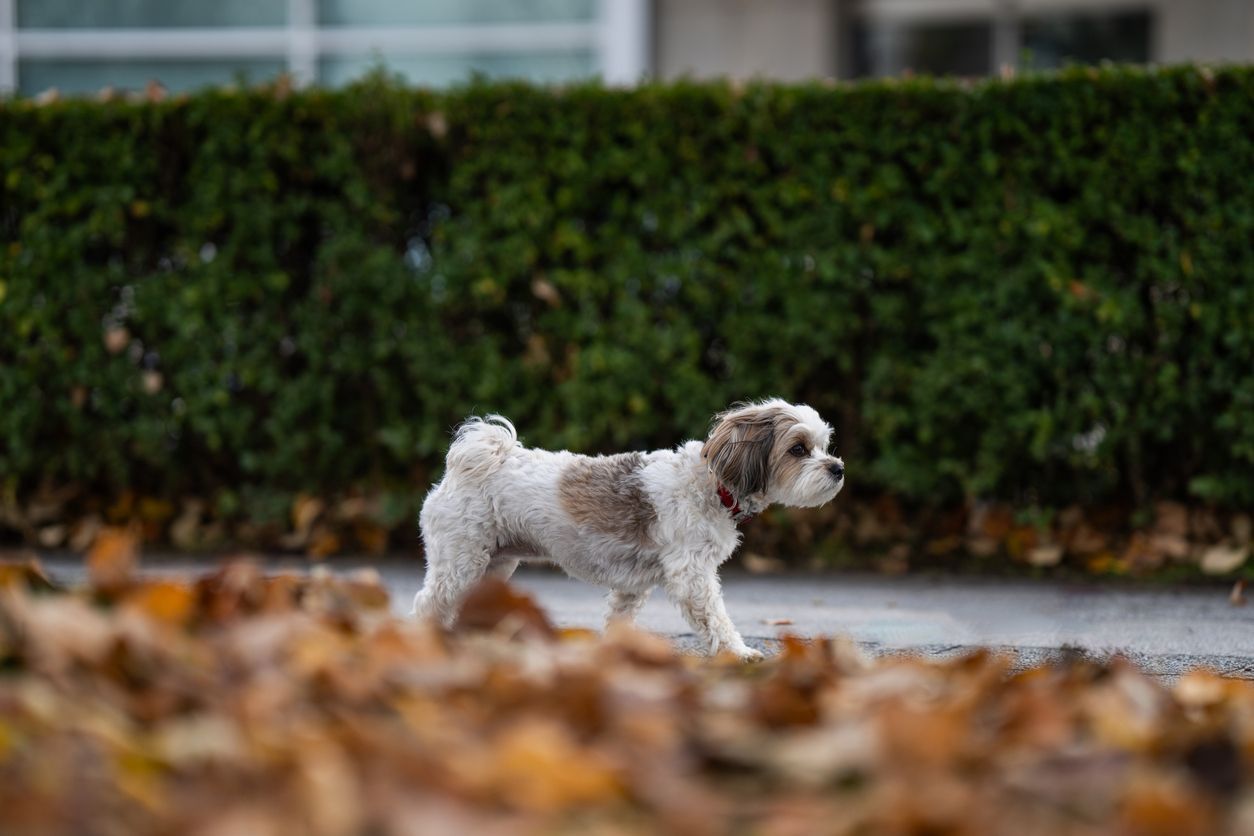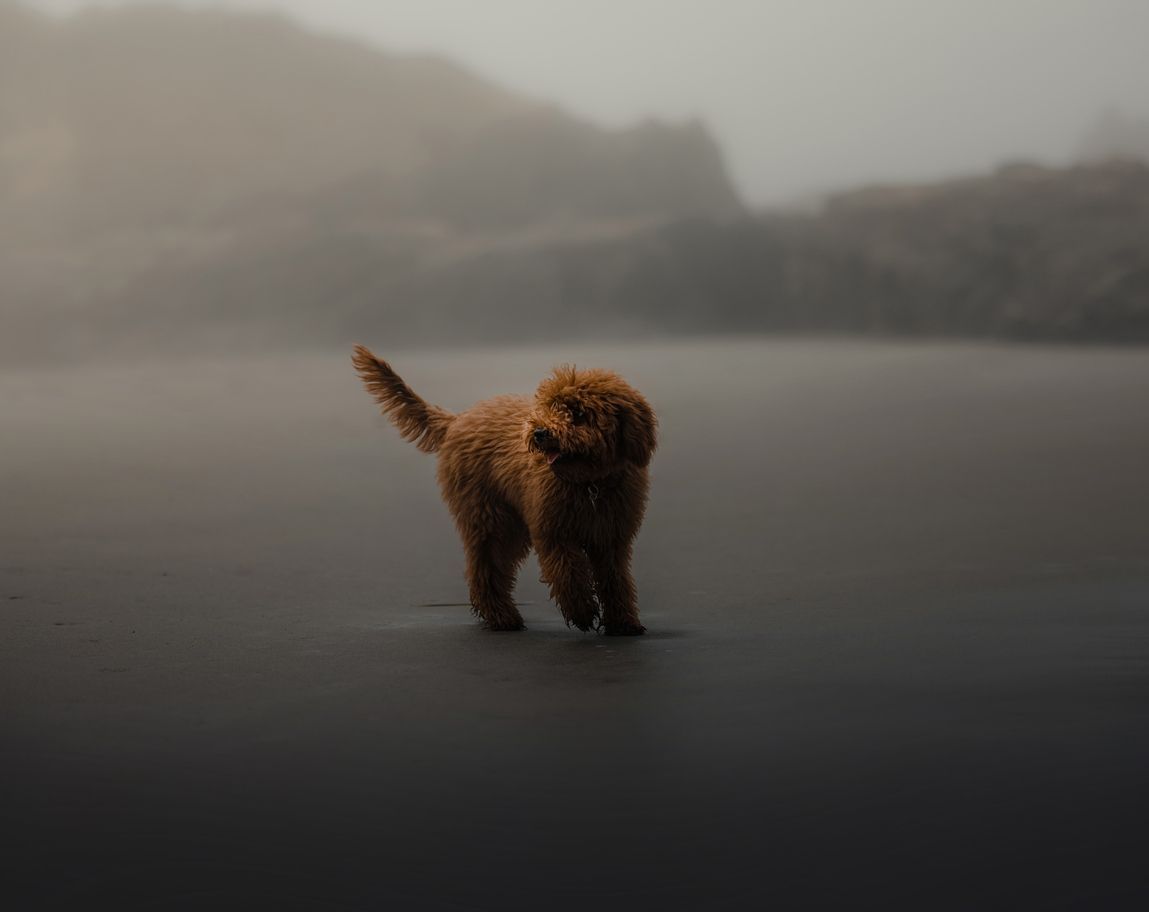What are the common signs of colic in horses?

Equine colic is a general term for a painful problem in your horse's digestive tract. Most causes of colic are often unpredictable and may be life-threatening, making it a common concern for horse owners. Horses are naturally prone to colic, but over 80% of cases of colic respond well to treatment on the farm, which is good news for you and your horses. The best preparation you can make for your horse is to familiarize yourself with the following:
- What colic is and why it happens
- What colic symptoms look like in horses
- Steps you can take when your horse colics
- How to prevent equine colic
The cause of colic is not always obvious until a veterinarian examines the horse. As a horse owner, understanding the issues horses may encounter can help you identify problems quickly, which improves the chances of early diagnosis and treatment. Following these tips will help keep your horse healthy and prepare you if your horse does run into this common health issue.
What is colic?
Colic refers to abdominal pain in horses, and can range from mild to severe depending on the cause. The symptoms depend on how much pain the horse is experiencing and how long it has been present. Cases of colic with severe symptoms are often associated with life-threatening conditions, which may result in death if not treated promptly. If you see your horse displaying any of these clinical signs, you should consider it an emergency and consult a veterinarian as soon as possible.
The common types of colic
Colic is a general term for any abdominal pain in horses. As a horse owner, understanding the different types of colic and their symptoms will help prepare you if your horse starts displaying signs. There are three basic types of colic: spasmodic, obstructive lesions, and functional obstruction.
- Spasmodic colic is the simplest and most common type of colic. Also known as gas colic, this condition occurs when excess gas production expands the gut and causes discomfort. Spasmodic colics usually respond well to antispasmodic drugs and symptomatic treatment such as pain medication. Spasmodic colic often occurs in the spring when owners move their horses to new, lush pastures.
- Obstructive lesions can be a complicated issue. Also known as impaction colic, this is when there is a blockage in the digestive tract. Impactions can occur anywhere along the intestinal tract, but are most common in the large intestine. In some cases, the obstruction results from the intestine twisting on itself, preventing feed from passing through the twisted areas. If this occurs, surgical treatment is required.
- Functional obstructions are the most severe and can be very difficult to treat. This type of colic occurs when nothing is blocking the gut, yet the feed is still not moving as it should. The partially digested food remains stationary rather than passing through the digestive tract, causing discomfort.
Spasmodic colic, obstructive colic, and functional colic should all be considered a medical emergency, and horses should see a veterinarian as soon as possible for proper diagnosis and treatment. Early detection and treatment create the best chances for a good prognosis.
Why do horses colic?
There are many predisposing factors that may cause your horse to develop colic. These factors include:
- High grain-based diets/low forage diets
- Moldy/tainted feed
- An abrupt change in feed
- Inadequate intake of water
- Sand ingestion
- Long-term use of NSAIDs
- Stress
The specific cause of colic is often difficult to identify. Any changes in routine can potentially cause colic, particularly spasmodic or impaction colics. Always introduce change slowly rather than all at once. You must address travel, restricted access to water, change in food source or composition, and even the weather with caution.
How do I know if my horse is colicing?
A horse experiencing colic will have a variety of symptoms that range in severity. If you notice these symptoms in your horse, immediately seek emergency veterinary care. As the different types of colic vary in degree of consequence, the symptoms also range from mild to severe.
Mild symptoms
With mild colic, your horse may have some minor abdominal pain and experience any of these mild symptoms:
- Poor appetite
- Reduced fecal production
- Fecal balls that are smaller than usual
- Passing dry or mucus (slime-covered) manure
- Change in drinking behavior
- Lethargy
- Grinding teeth
- Tacky gums
- Flehmen response (curling the upper lip back)
Moderate symptoms
Moderate symptoms of colic indicate increased abdominal pain and can include:
- Lying down
- Attempting to roll
- Groaning
- Pawing
- Biting at the flanks
- Kicking at the abdomen
- Elevated heart rate (over 45 to 50 beats per minute)
Severe symptoms
Severe symptoms of colic result from intense abdominal pain and present as any of these symptoms:
- Frequently getting up and down
- Constantly rolling
- Unwilling to stand up
- Heavy sweating
- Rapid breathing
- Aggressively biting or kicking themselves to the point of causing injury
- Bloody urine
“Colic can come on suddenly, and must be identified quickly for the best chance of treatment,” explains Dr. Madison Ricard, a veterinarian at Vetster. “Knowing the difference between when your horse is rolling, moving, and being playful rather than when they’re in pain will help you decipher if it is time to call the vet. For example, a horse laying down for a nap often rests quietly in the company of their equine friends. A horse feeling sick may roll excessively, groan, and be unwilling to stand up. Often, these horses are found laying down away from their herd or in unusual locations where they do not normally rest.”
Watch for any unusual behavior indicating your horse feels discomfort in their abdomen and needs to visit the vet. Even if the symptoms seem mild, they may escalate, and the sooner you allow a veterinarian to treat your horse, the quicker it can recover.
What do I do if my horse has colic?
If you suspect your horse is colicing, you should get in touch with a veterinarian immediately. While you wait for the vet to show up, here are some actions you can take to keep your horse as comfortable as possible.
Leave them lying down calmly. Many people believe that in all scenarios, when a horse is colicing, lying down is the worst thing for the animal. This is not the case. If the horse is lying down quietly and is not at risk of injuring itself, you can let them continue to rest.
Walk your horse if they are uneasy. If the horse is thrashing around or at risk of injury, then it is best to walk them to prevent them from injuring themselves. Only force them to walk if they are actively at risk of injury. If the horse will stand or lay down quietly, allow them to rest to maintain their energy.
Do not provide treatment yourself. It is best not to administer any oral medications or give injections yourself without veterinary consultation. Instead, wait for help to arrive unless specifically instructed otherwise by your veterinarian.
Remove food from the horse's area. Although many horses are unwilling to eat while they are colicing, additional food in the horse’s gut will only make their discomfort worse. As part of treatment, your veterinarian will recommend a slow reintroduction of feed to prevent another colic episode from occurring.
Evaluate their vital signs safely. While you wait for the veterinarian, safely evaluate your horse’s vitals if you are able. This way, you will help the vet save time working up your horse when they arrive. Vital signs to gather include:
- Heart rate
- Respiratory rate
- Rectal temperature
- Color of gums
- Moistness of the gums
- Capillary refill time
- Unusual sounds (gut sounds) in the digestive tract
- Manure production
Other information your vet may ask for includes recent changes in feed or exercise, the horse’s lifestyle, medical and breeding history, and pregnancy status. Having all this information at the ready will help the vet accurately and efficiently provide proper medical treatment for your horse.
How do I help my horse recover from an episode of colic?
The most crucial step to bringing your horse back to total health from colicing is closely watching over them once they have recovered. Monitor every aspect of your horse’s behavior to make sure their symptoms are improving, not worsening. Ensure no colic symptoms are still occurring. If your horse is kicking at the belly, has a tucked-up abdomen, or is rolling or swishing their tail frequently, they must return to the vet. Horses that show these signs following colic treatment need another examination.
Horses that are no longer showing colic signs should have their water intake, eating behaviors, consistency and amount of manure production, and urination monitored. If these normal bodily functions have returned to normal, your horse is likely on the mend.
Horses in recovery should have full access to warm, clear water and electrolytes to encourage them to drink. When it comes to feeding, give their gastrointestinal tract time to adjust by gradually increasing their hay rations while they recover. Grain should also be slowly reintroduced based on your veterinarian’s recommendations.
Can I prevent my horse from getting colic?
Colic is very common, and most horses will experience colic episodes at least a few times during their lifetime. Unfortunately, many types of colic are not preventable. Horses are more likely to develop colic after sudden lifestyle changes, dehydration, or being unable to chew properly. With that in mind, there are a few tips that you can implement to help avoid colic:
- Provide fresh, clean water at all times. Research shows horses without access to water for even one to two hours have an increased risk of colic. During the winter, frequently break up ice in tanks to ensure your horse has access to water. If possible, using heaters in the water tank is preferred, as horses are more likely to drink lukewarm water.
- Allow horses on pasture. Horses on pasture move long distances while they are grazing, which encourages gut motility. Horses that are stabled or kept in small paddocks often move much less.
- Avoid feeding hay on the ground in sandy soil. Small amounts of sand ingested with feed can clog up a horse’s digestive tract, causing colic. Instead, use feed tubs or hay racks or nets. Placing a rubber mat under the hay net or feed tub can help keep horses from consuming sand as they clean up any hay scraps or spilled grain.
- Feed grain and pellet feed only when you need to. The chance of colic increases the more grain you feed. Try to stick to a mostly hay diet rather than all grain.
- Monitor horses closely after significant lifestyle changes. Weather, feed, or stabling changes can induce colic. If you need to switch anything in their routine, do it gradually and watch for any signs of colic as they adjust.
- Float horse teeth as directed by your veterinarian. Proper dental care for your horse’s teeth will ensure they can chew their food correctly. Without chewing correctly, horses may ingest long fibers of hay or poorly ground grain, which is more likely to become stuck in the digestive tract.
- Control parasites in your horse. Horses that are regularly de-wormed are less likely to have colic.
- Monitor broodmares closely. It is important to closely watch broodmares in the two months after they have foaled, as the space previously occupied by the foal is now empty, and the intestines may twist as they move to fill that space.
Many factors can lead to colic in your horse. Since horses are so unpredictable, the best strategy is to take preventive measures to ensure you do everything possible to avoid colic.
Know how to handle equine colic
Horses experience all types of changes throughout life. Lifestyle changes ranging from where they live and the kind of food they eat to the weather and their drinking habits all put them at risk of colic. Understanding why horses get colic and the symptoms of colic will help you know when to call the veterinarian. All horses experiencing colic-like symptoms need emergency veterinary assistance. If you have any questions regarding colic in horses and how to handle or prevent it, book an online virtual care appointment with Vetster to keep your horse healthy.
FAQ - What are the common signs of colic in horses?
Can a horse eat while it's colicing?
Horses with colic often will not eat or drink. Feed should be removed from the horse’s stall during colic episodes, as adding additional food to the gut will only worsen their discomfort.
Should a horse walk/roll/lay down with colic?
Many horse owners believe that horses must be kept walking while they are colicing. However, this is not always the case. If a horse is at risk of injuring themselves due to thrashing or rolling, then walking the horse is preferred to prevent injury. If the horse lies down or stands quietly, it is okay to let them rest.
How does colic cause death in horses?
Some types of colic reduce blood supply to the intestine, causing death of the intestinal tissue. Even with prompt surgical treatment to remove the dead tissue and restore blood flow, these horses have a poor prognosis. Many owners elect to euthanize horses who require surgery, due to high costs and the risk of complications.




